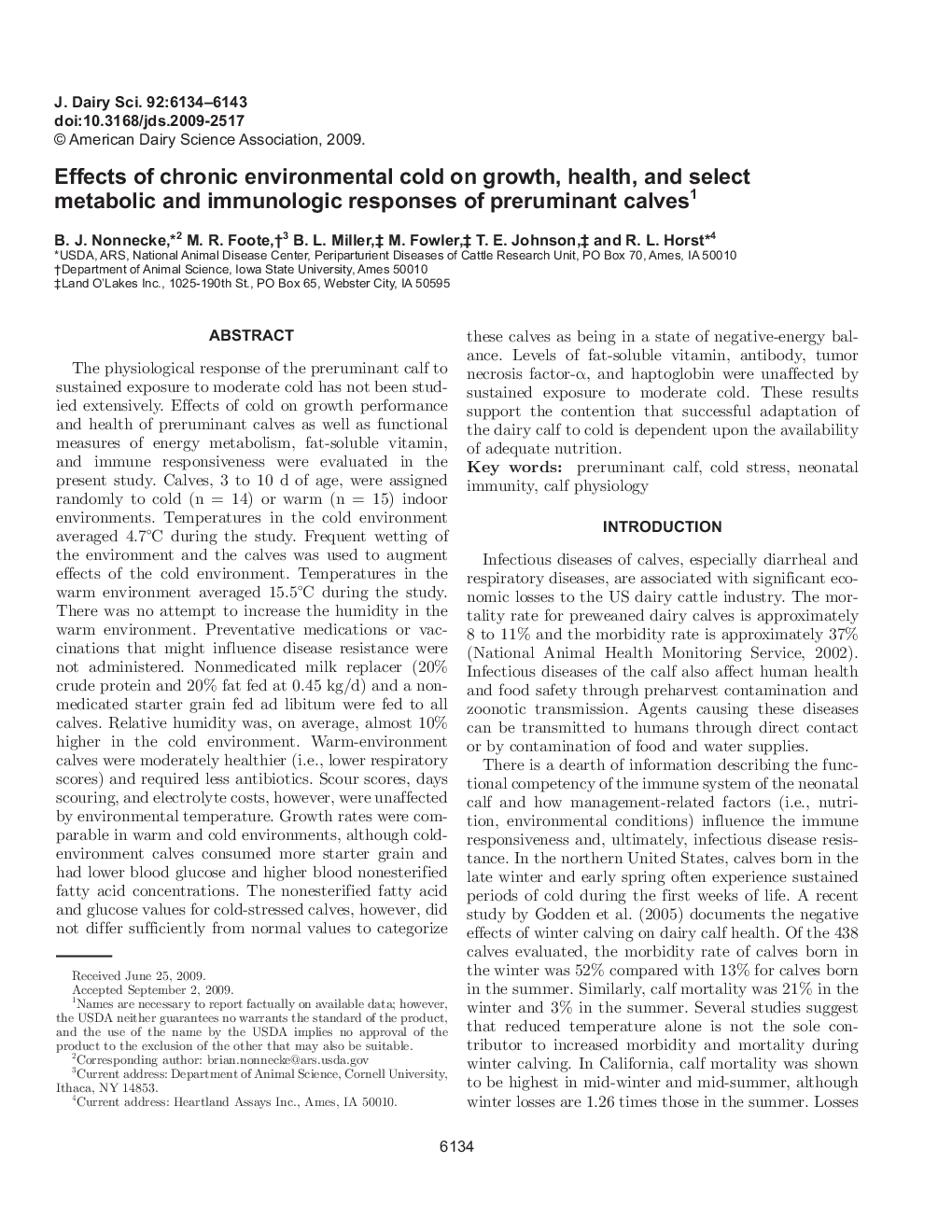| Article ID | Journal | Published Year | Pages | File Type |
|---|---|---|---|---|
| 2438955 | Journal of Dairy Science | 2009 | 10 Pages |
The physiological response of the preruminant calf to sustained exposure to moderate cold has not been studied extensively. Effects of cold on growth performance and health of preruminant calves as well as functional measures of energy metabolism, fat-soluble vitamin, and immune responsiveness were evaluated in the present study. Calves, 3 to 10 d of age, were assigned randomly to cold (n = 14) or warm (n = 15) indoor environments. Temperatures in the cold environment averaged 4.7°C during the study. Frequent wetting of the environment and the calves was used to augment effects of the cold environment. Temperatures in the warm environment averaged 15.5°C during the study. There was no attempt to increase the humidity in the warm environment. Preventative medications or vaccinations that might influence disease resistance were not administered. Nonmedicated milk replacer (20% crude protein and 20% fat fed at 0.45 kg/d) and a nonmedicated starter grain fed ad libitum were fed to all calves. Relative humidity was, on average, almost 10% higher in the cold environment. Warm-environment calves were moderately healthier (i.e., lower respiratory scores) and required less antibiotics. Scour scores, days scouring, and electrolyte costs, however, were unaffected by environmental temperature. Growth rates were comparable in warm and cold environments, although cold-environment calves consumed more starter grain and had lower blood glucose and higher blood nonesterified fatty acid concentrations. The nonesterified fatty acid and glucose values for cold-stressed calves, however, did not differ sufficiently from normal values to categorize these calves as being in a state of negative-energy balance. Levels of fat-soluble vitamin, antibody, tumor necrosis factor-α, and haptoglobin were unaffected by sustained exposure to moderate cold. These results support the contention that successful adaptation of the dairy calf to cold is dependent upon the availability of adequate nutrition.
